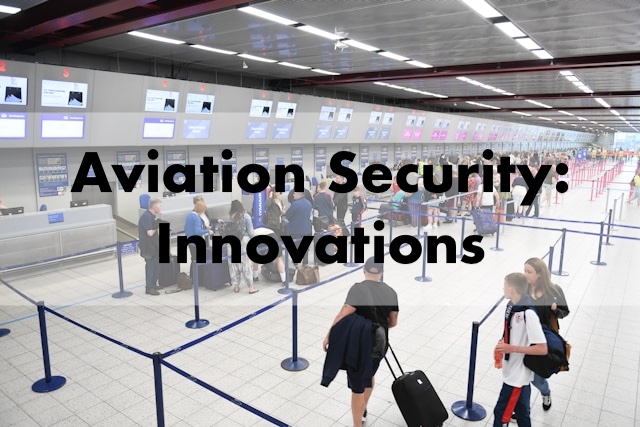Isn’t it fascinating how our journey through airports, surrounded by the buzz of travel, is underpinned by a complex and dynamic system dedicated to ensuring our safety? Let’s dive into the world of aviation security, where innovation meets vigilance, ensuring our journeys are not just about destinations but about safe passages.
Check These on More Technology Advances:
Understanding the Core of Aviation Security
Have you ever paused while hurrying through the security line, curious about the intricate processes that unfold in the background? Let’s peel back the layers of this security onion, revealing how each layer, from the perimeter of the airport to the inside of the aircraft, is fortified with innovative practices and technologies.
It’s not just about scanning bags or patting down passengers; it’s a comprehensive approach that encompasses various layers of security measures, each designed to thwart potential threats and ensure a safe flying experience. Suppliers like Pilot John International are making sure the latest technology and parts are available to help with this.
The Layers of Security: A Closer Look
- Pre-boarding Checks: It starts even before you reach the airport, with background checks and watch-list screenings.
- Airport Perimeter Security: Fences, surveillance, and patrols keep unauthorized access at bay.
- Passenger and Baggage Screening: The most visible aspect, involving scanners, detectors, and manual checks.
- In-flight Security: From air marshals to secure cockpit doors, in-flight security is an invisible shield.
Check These:
Innovations in Threat Detection
AI and Machine Learning: The Game Changers
Artificial intelligence (AI) and machine learning (ML) are not just buzzwords but pivotal elements in transforming threat detection. These technologies enhance the ability to identify and assess risks with unprecedented precision and speed.
How AI and ML Make a Difference:
- Pattern Recognition: AI algorithms can detect suspicious behaviors or anomalies in passenger flow, identifying potential threats before they materialize.
- Predictive Analysis: By analyzing vast datasets, AI can predict potential security breaches, allowing preemptive actions.
Biometric Breakthroughs
Ever marveled at how a machine can recognize you just by scanning your face or fingerprint? Biometric technology brings a personal touch to security, ensuring that the person who checked in is the one boarding the plane, all while speeding up the process. It’s personalization at its best, ensuring each passenger’s security is as unique as their fingerprint.

https://unsplash.com/photos/white-and-gray-airplane-on-airport-during-daytime-FB406CKGL0Q
Key Biometric Innovations:
- Facial Recognition: Fast, non-intrusive identification that enhances security while streamlining boarding processes.
- Fingerprint and Iris Scans: High-precision methods that ensure the person boarding the flight is the same one who checked in.
Advancements in Screening Technologies
Screening technologies are the frontline warriors of aviation security.
Next-Gen Scanners
Gone are the days of simple metal detectors. Today’s scanners offer a holistic view, detecting a wide array of potential threats.
Spotlight on Advanced Scanners:
- CT Scanners: Providing 3D images, allowing for a more detailed analysis of baggage contents.
- Liquid Scanners: Detecting explosive liquids without opening bottles, enhancing both safety and convenience.
Robotic Assistance
Robots are stepping into the aviation security arena, offering new dimensions of efficiency and precision.
More On Security Here:
Robots at Work:
- Surveillance Robots: Patrolling airport perimeters, equipped with cameras and sensors.
- Bomb Disposal Units: Robots that can safely inspect and neutralize explosive threats.
Mitigating Threats: Proactive Strategies
Detection is just one side of the coin; effective mitigation strategies are crucial to neutralize potential threats.
Risk Assessment and Management
Understanding and evaluating the risk landscape is key to developing robust mitigation strategies.
Steps in Risk Management:
- Identify Potential Threats: Constant vigilance and intelligence gathering are essential.
- Assess Vulnerabilities: Pinpointing weak spots in security infrastructure.
- Develop Countermeasures: Tailoring strategies to address specific risks.
Training and Preparedness
The human element is vital in aviation security. Regular training and preparedness drills ensure that security personnel are always ready to respond to any situation.
Enhancing Human Response:
- Simulation Training: Using virtual reality to simulate various threat scenarios.
- Decision-Making Drills: Preparing staff to make quick, informed decisions under pressure.
The Future Horizon
As we look to the future, the trajectory of aviation security is clear – it’s heading towards more integrated, intelligent, and innovative solutions. The synergy of technology and human expertise is crafting a safer airspace, not just for today but for the days to come.
Embracing the New Era
- Integration of IoT: The Internet of Things (IoT) promises a more connected and informed security network.
- Cybersecurity Measures: As aviation becomes more digital, protecting against cyber threats is paramount.
Conclusion
The next time you travel, take a moment to appreciate the intricate dance of security measures, each step meticulously choreographed to ensure that your journey is not just about reaching your destination but about getting there safely.
